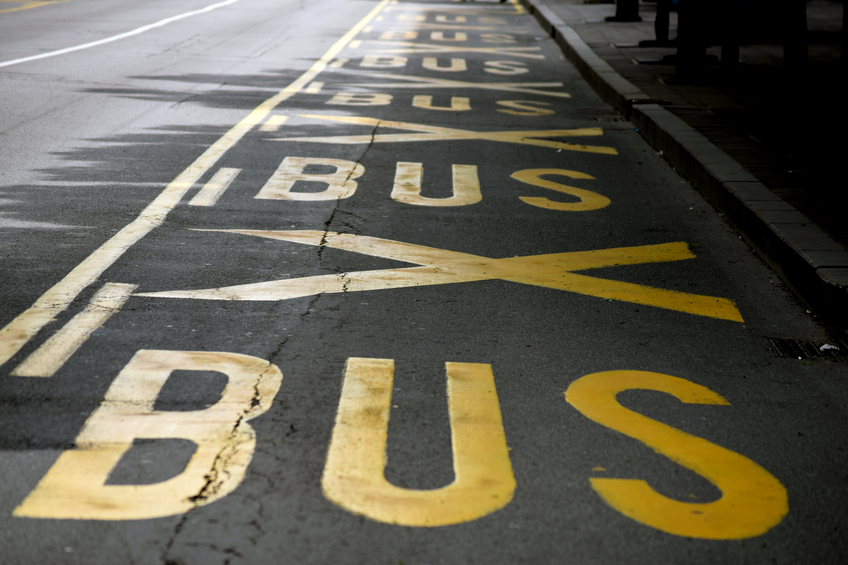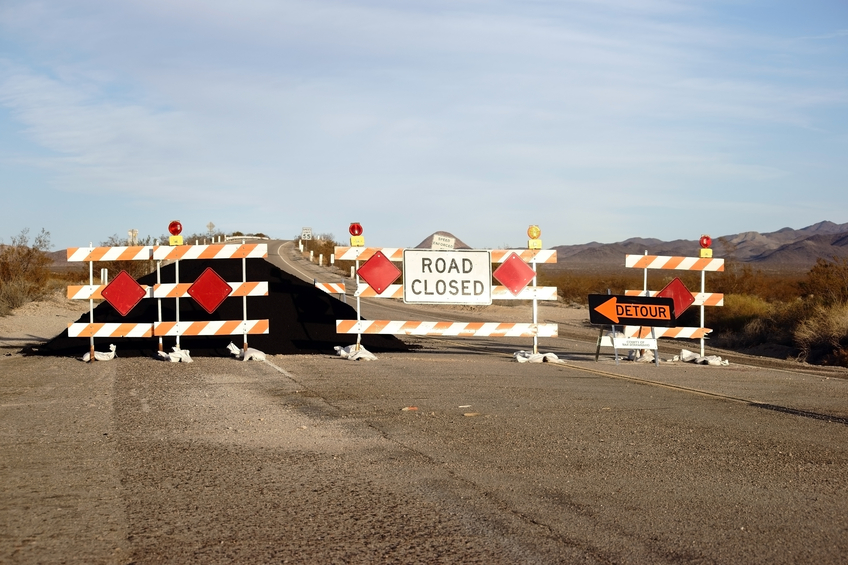North Dakota Transportation and Ethics 30 PDH Discount Package 2
Courses in this Package
Roundabout Traffic Design and Landscaping (C03-010)
Managed Freeway Lanes (C04-011)
Minimum Retroreflectivity Levels for Blue and Brown Traffic Signs (C04-046)
Ramp Management Strategies (C04-010)
Low-Cost Treatments for Horizontal Curve Safety (C08-020)
Collaboration Across the Road Weather Enterprise (C06-021)
Ethical Issue: Deciding if Something is a Gift or a Bribe (LE1-007)

This online engineering PDH course presents guidelines on the design of traffic elements, illumination, and landscaping associated with roundabouts.
The design of these elements is critical in achieving the desired operational and safety features of a roundabout, as well as the desired visibility and aesthetics.
This 3 PDH online course is applicable to traffic engineers, transportation planners, conceptual and detailed designers, and other technical professionals who are involved in the traffic design and landscaping of roundabouts.
This PE continuing education course is intended to provide you with the following specific knowledge and skills:
- Designing the traffic elements including signing, pavement markings and work zone traffic control
- Designing the required illumination
- Landscaping the central island, splitter island and approach
In this professional engineering CEU course, you need to review Chapter 7, "Traffic Design and Landscaping", of the Federal Highway Administration Publication FHWA-RD-00-067, "Understanding Roundabouts".
Upon successful completion of the quiz, print your Certificate of Completion instantly. (Note: if you are paying by check or money order, you will be able to print it after we receive your payment.) For your convenience, we will also email it to you. Please note that you can log in to your account at any time to access and print your Certificate of Completion.

This online engineering PDH course describes operating managed lane projects through a case study approach, highlighting best practices of the projects and the lessons learned. It also presents emerging issues and knowledge gaps. The intent of this course is to provide a cross-cutting study of the issues and experiences of various agencies as managed lane projects are implemented and policies are drafted.
Increasing traffic congestion in the major metropolitan areas is costing billions of dollars each year in lost productivity, wasted fuel, increasing air pollution and hours of delay. Adding new general-purpose lanes is increasingly difficult because of factors such as construction costs, limited right-of-way, environmental and societal concerns. As a result, agencies are looking for solutions to improve the flow of traffic on existing facilities.
One concept being considered is that of "managed lanes". Managed lanes employ various strategies to improve flow and maximize the efficiency of the freeway system. Common types of managed lanes include high-occupancy vehicle (HOV) lanes, high-occupancy toll (HOT) lanes, value priced lanes, or exclusive or special use lanes.
This 4 PDH online course is applicable to traffic engineers, transportation planners, conceptual and detail designers, and other technical professionals who are involved with developing and operating managed lane facilities in freeway corridors and are interested in gaining a basic understanding of the issues associated with developing managed lane projects.
This PE continuing education course is intended to provide you with the following specific knowledge and skills:
- Understanding managed lanes
- Planning and implementing managed lanes
- Considering operational and design issues
- Understanding the effects of managed lanes over the facility life on its implementation
In this professional engineering CEU course, you need to review the Federal Highway Administration Publication FHWA-HOP-05-037, "Managed Lanes".
Upon successful completion of the quiz, print your Certificate of Completion instantly. (Note: if you are paying by check or money order, you will be able to print it after we receive your payment.) For your convenience, we will also email it to you. Please note that you can log in to your account at any time to access and print your Certificate of Completion.

This online engineering PDH course describes the research activities and consequent findings related to the development of recommendations for maintained retroreflectivity (MR) levels for white-on-blue signs and white-on-brown signs. It also includes an investigation related to MR levels needed for complex visual conditions that include glare from oncoming headlamps and fixed roadway lighting.
In 2003, the Federal Highway Administration published research recommendations for minimum MR levels for traffic signs. The recommendations included most sign types but not white-on-blue signs or white-on-brown signs. In addition, the 2003 MR levels were based on conditions representing dark rural environments.
This 4 PDH online course is applicable to all traffic engineers, transportation planners, sign manufacturers and all personnel interested in learning about or who are involved in the planning and determination of minimum retroreflectivity levels for traffic signs.
This PE continuing education course is intended to provide you with the following specific knowledge and skills:
- Understanding research objectives and activities
- Learning about minimum retroreflectivity, glare and surround complexity
- Understanding the experimental variables, luminance levels and environmental conditions
- Evaluating experimental results of white-on-blue signs vs. white-on-brown signs
- Learning about the luminance threshold levels and minimum retroreflectivity levels
In this professional engineering CEU course, you need to review the Federal Highway Administration (FHWA) no. FHWA-HRT-08-029, "Minimum Retroreflectivity Levels for Blue and Brown Traffic Signs", April 2008.
Upon successful completion of the quiz, print your Certificate of Completion instantly. (Note: if you are paying by check or money order, you will be able to print it after we receive your payment.) For your convenience, we will also email it to you. Please note that you can log in to your account at any time to access and print your Certificate of Completion.

This online engineering PDH course introduces and describes four commonly used strategies that may be implemented to better manage traffic on and adjacent to freeway ramps. In doing so, this course lays the foundation from which practitioners may successfully develop, select, operate and maintain strategies and plans.
These four strategies give agencies the ability to control the rate that traffic is allowed to enter the freeway facility; temporarily or permanently restrict traffic flow, provide priority to special vehicle uses, and implement treatments at the ramp-arterial terminal to improve traffic operations on and along ramps and adjacent arterials. For each strategy, a number of associated techniques and approaches exist, some of which will prove to be better than others at fulfilling agency goals and objectives.
This 4 PDH online course is applicable to traffic engineers, transportation planners, conceptual and detail designers, and other technical professionals who are interested in gaining a better understanding in ramp management strategies.
This PE continuing education course is intended to provide you with the following specific knowledge and skills:
- Familiarizing with the four basic strategies used to manage traffic on freeway entrance and exit ramps
- Understanding of what each ramp management strategy entails and the benefits and impacts of implementing each
- Identifying where ramp metering strategies have been applied and the results that strategies produced
- Understanding the unique issues associated with each strategy and why these issues are important
In this professional engineering CEU course, you need to review Chapter 5, "Ramp Management Strategies" of the Federal Highway Administration Publication FHWA-HOP-06-001, "Ramp Management and Control Handbook".
Upon successful completion of the quiz, print your Certificate of Completion instantly. (Note: if you are paying by check or money order, you will be able to print it after we receive your payment.) For your convenience, we will also email it to you. Please note that you can log in to your account at any time to access and print your Certificate of Completion.

This online PDH course primarily covers engineering countermeasures for horizontal curve safety that are relatively low-cost, such as signage and pavement markings.
This course is intended to provide information specifically relating to lower volume two-lane roads and the agencies that manage them. It will help transportation agencies and their crews understand the available countermeasures and how to select and apply them.
This 8 PDH online course is applicable to traffic engineers, local transport agencies, design professionals and personnel who wish to understand the available horizontal curve safety countermeasures and how to select and apply them.
This PE continuing education course is intended to provide you with the following specific knowledge and skills:
- Learning about the two components of safety improvements
- Familiarization with the markings, signs, and pavement countermeasures that are used to improve horizontal curve safety
- Addressing the importance of roadside conditions and improvement opportunities
- Familiarization with the possible means of improving intersections
Upon successful completion of the quiz, print your Certificate of Completion instantly. (Note: if you are paying by check or money order, you will be able to print it after we receive your payment.) For your convenience, we will also email it to you. Please note that you can log in to your account at any time to access and print your Certificate of Completion.

This online engineering PDH course provides information on the best methods and practices for cross agency collaboration and the integration of weather information into daily transportation operations.
Weather has a significant impact on the operations of the nation’s roadway system year round. To help improve weather impacts on our roadways, the Federal Highway Administration (FHWA), Road Weather Management Program (RWMP), and the National Oceanic and Atmospheric Administration’s (NOAA’s) National Weather Service (NWS) have been working together to document the state-of-the-practice and working relationships between State Departments of Transportation (DOTs) and the weather enterprise.
The Pathfinder project was initiated to document current State DOT interactions and working relationships with the weather enterprise (both NWS and private sector). The team documented best practices across the agencies to disseminate consistent messages about the weather and its impact on the roads.
This 6 PDH online course is applicable to transportation engineers and traffic managers who are interested in learning more about the impact of weather on roadway systems and the best methods for improving the collaboration between State DOTs and the weather enterprise.
This PE continuing education course is intended to provide you with the following specific knowledge and skills:
- Familiarizing with the impact of weather on the nation’s roadway system
- Familiarizing with the Pathfinder project, its background and the related concepts
- Learning about applying road weather forecasting in a State
- Understanding the weather impact on safety, mobility and productivity
- Exploring collaborative partnerships and relationships between the State and weather enterprise
Upon successful completion of the quiz, print your Certificate of Completion instantly. (Note: if you are paying by check or money order, you will be able to print it after we receive your payment.) For your convenience, we will also email it to you. Please note that you can log in to your account at any time to access and print your Certificate of Completion.

This online engineering PDH course will establish, through the presentation of many examples, the principles of distinguishing between a gift and a bribe.
The federal government has formulated detailed rules covering gifts given to executive-branch employees in many situations. The rules are published in the Code of Federal Regulations (CFR) and are illustrated through many examples. Even though the examples are intended for government employees (many of whom are engineers), they also apply to private-sector engineers in similar situations. This course presents selected CFR examples that furnish guidance on the ethics of gift giving in situations that are especially relevant to engineers.
This 1 PDH online course is intended for engineers seeking guidance on distinguishing between ethical gift-giving and bribery.
This PE continuing education course is intended to provide you with the following specific knowledge and skills:
- Familiarizing with definitions of a bribe and a gift
- Knowing the bribe status of a gift based on a personal relationship
- Understanding the conditions under which gifts to spouses are acceptable
- Knowing the need to avoid even the appearance of a gift being a bribe
- Recognizing when gifts involving free attendance at meetings and conferences are acceptable
- Understanding the importance of the cumulative effect of receiving even small gifts on a periodic basis
- Learning the importance of gifts received when on assignment rather than outside of work
Upon successful completion of the quiz, print your Certificate of Completion instantly. (Note: if you are paying by check or money order, you will be able to print it after we receive your payment.) For your convenience, we will also email it to you. Please note that you can log in to your account at any time to access and print your Certificate of Completion.